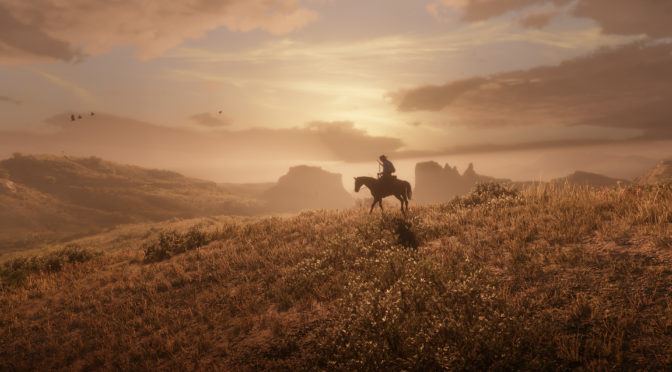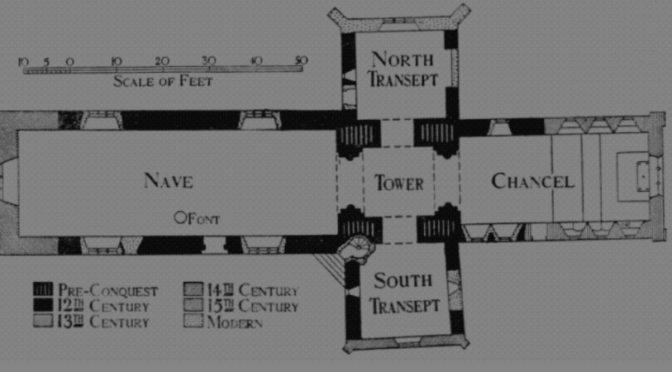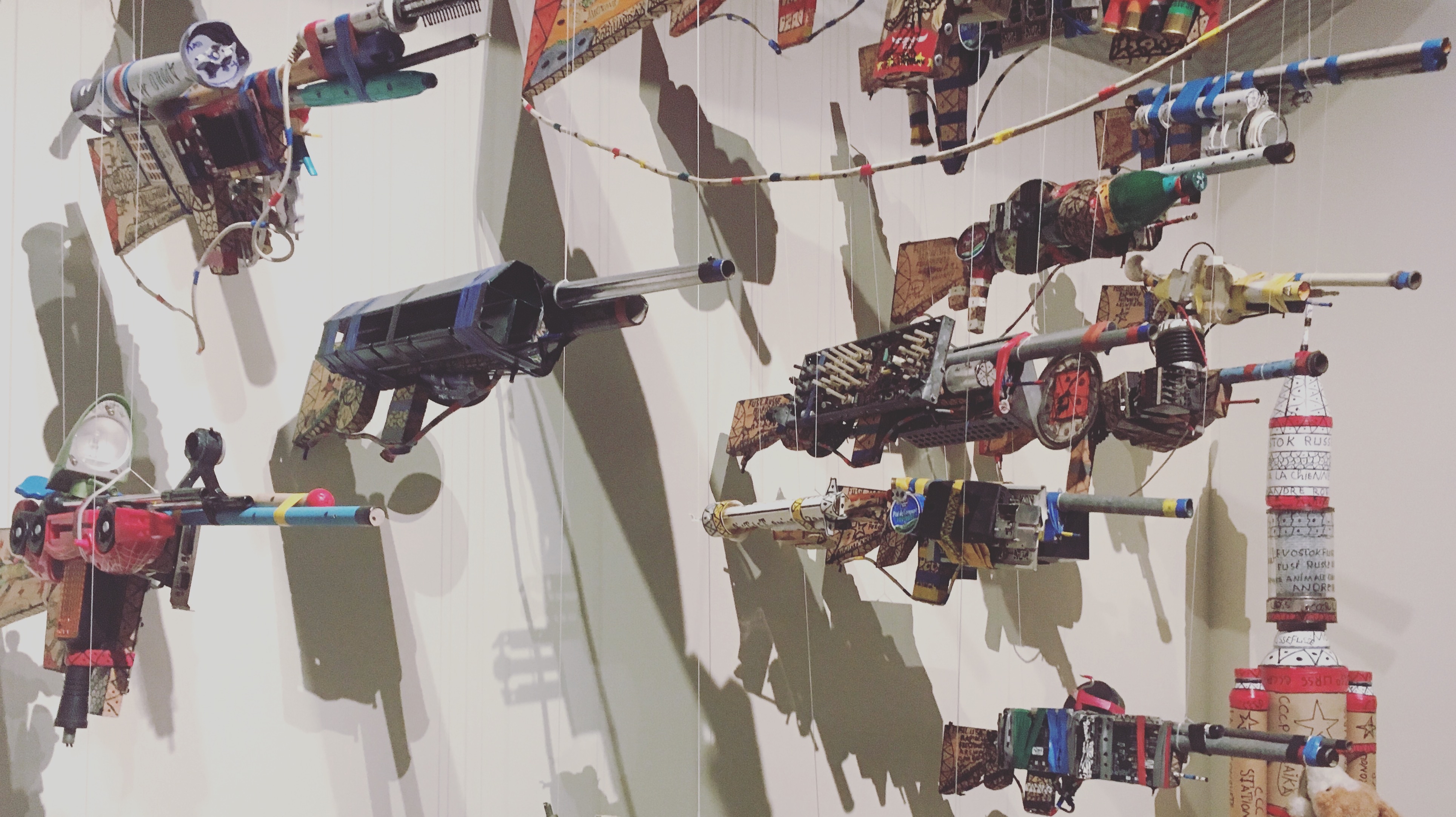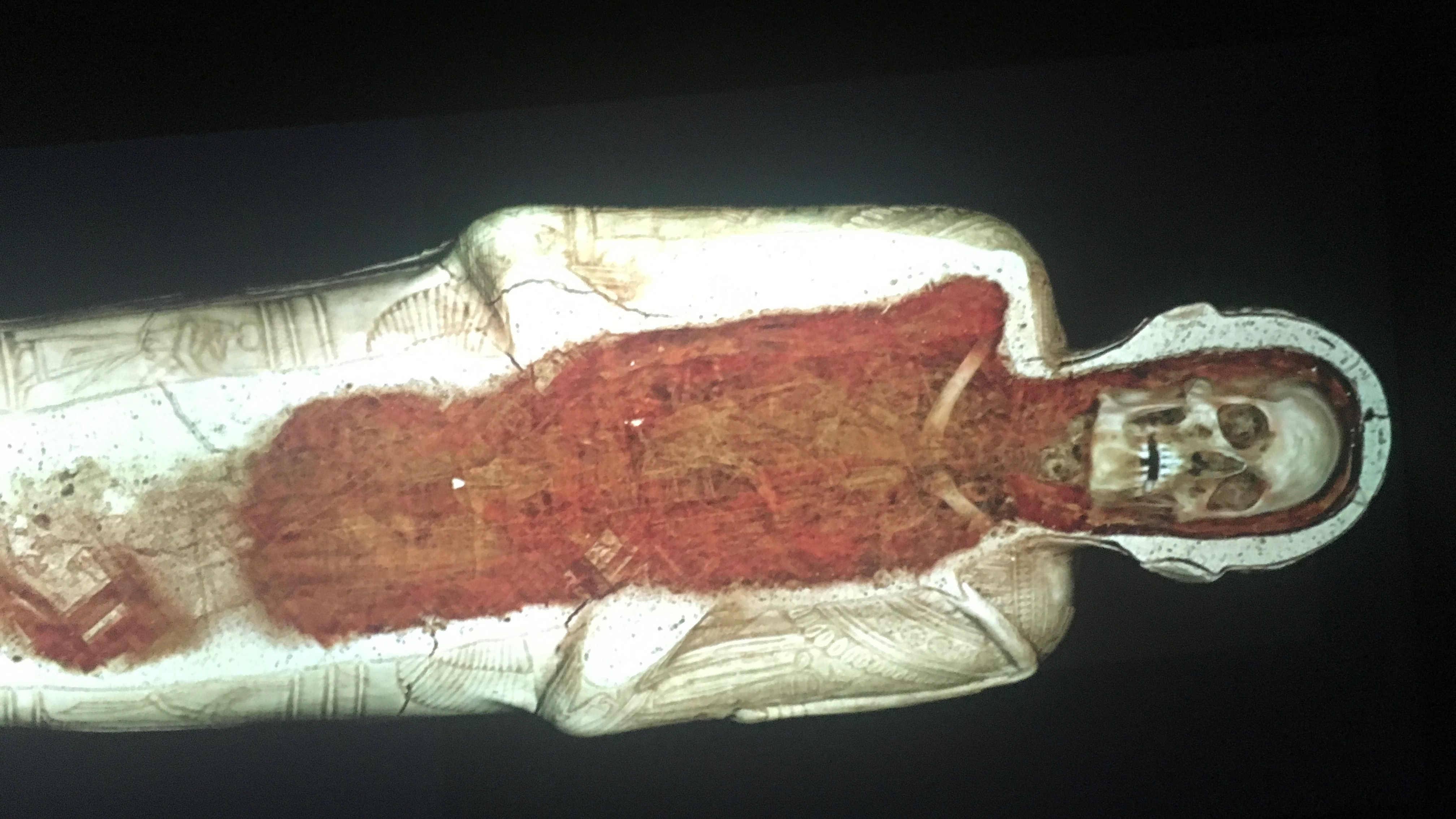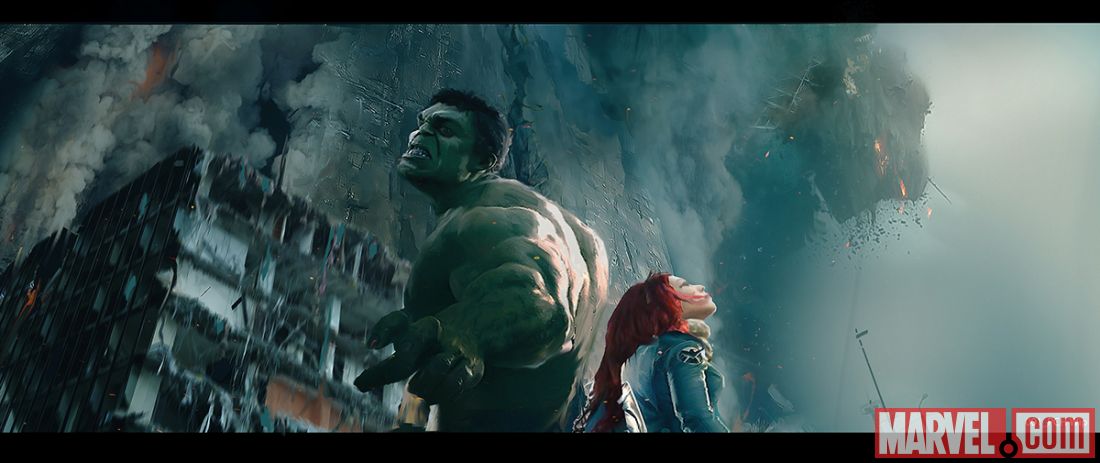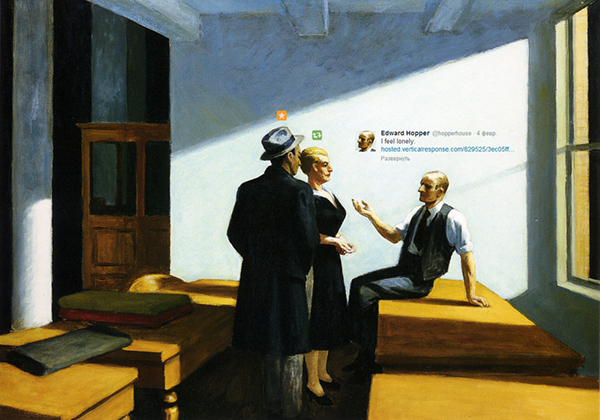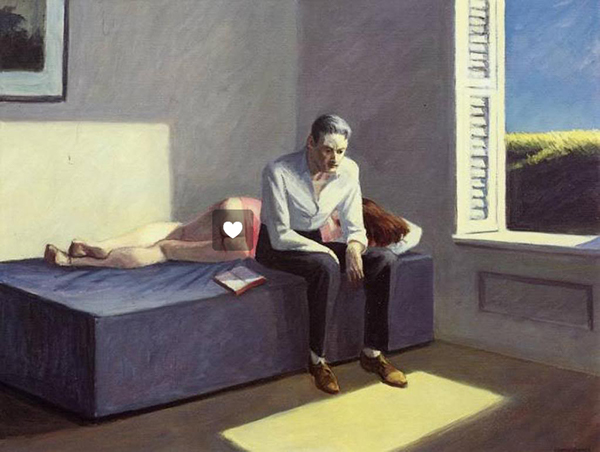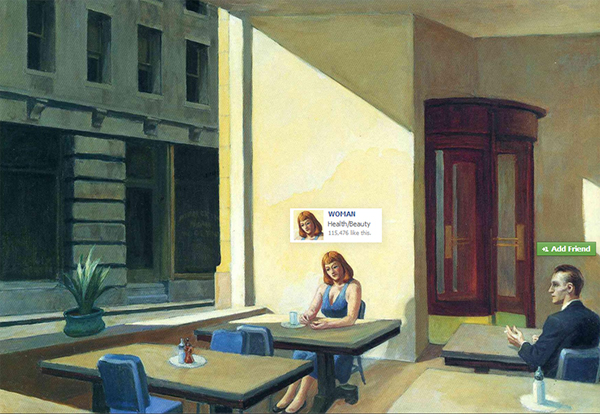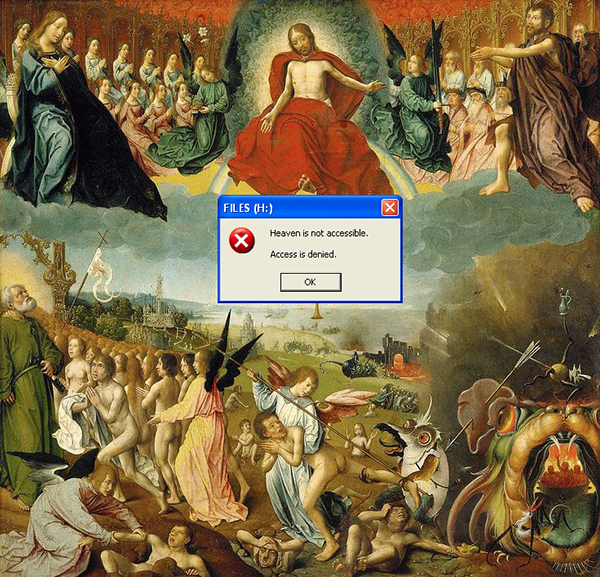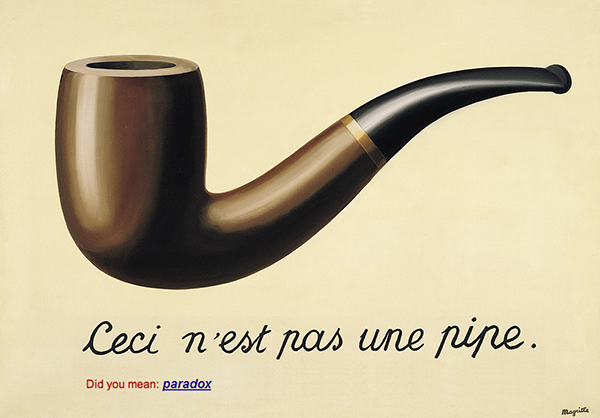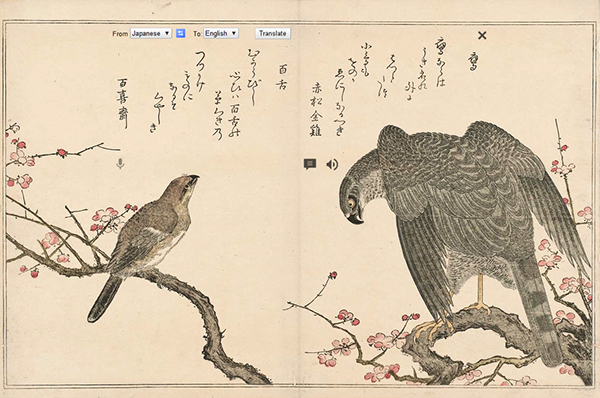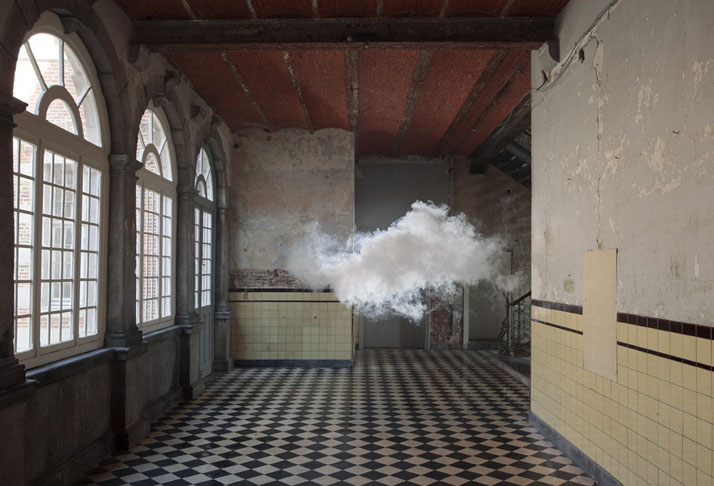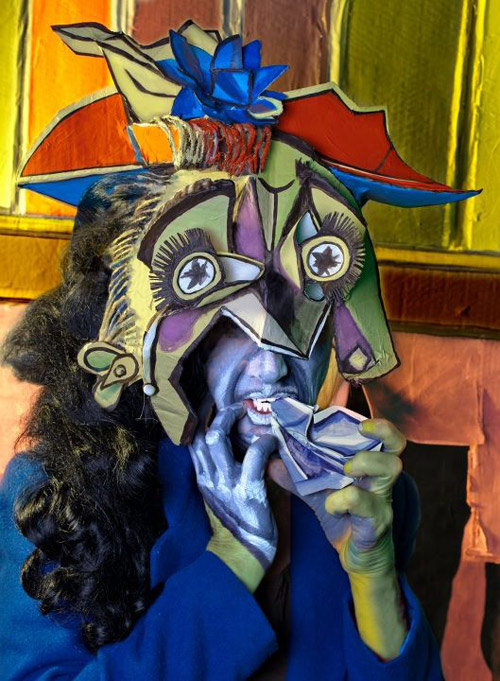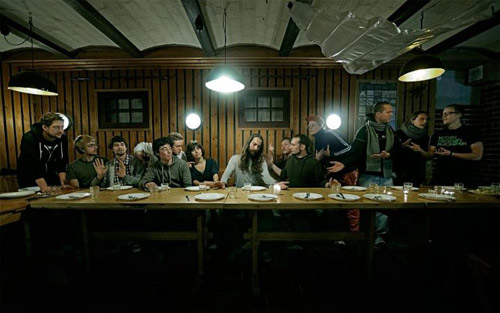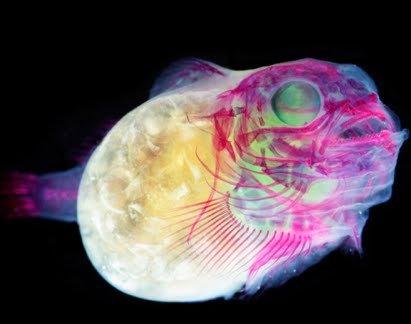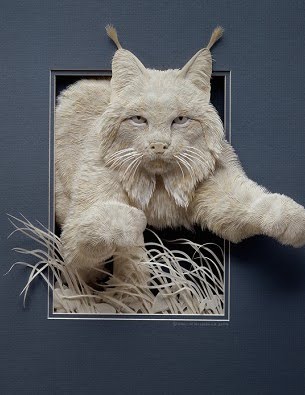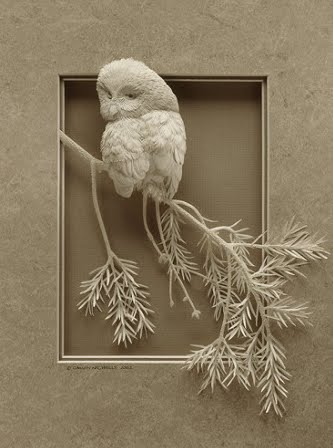But what if I need you in my darkest hour?
What if it turns out there is no other?
We had it all
If this is our time now
We wanna see a sign, oh
We would see a sign
So give us a sign
I need some guiding light
Children of darkness, oh — ’42’, Mumford and Sons
I heard someone recently say that the history of art in the west can be described as a thousand years of religious art and then stripes — the idea being that once the transcendent or sacred disappears from our cultural narrative we’re left with trying to make meaning from the very mundane. It’s an interesting thesis, but I don’t think it bears scrutiny, at least not when it comes to art that is worth one’s time and attention (whether high or pop culture). While stripes abound as a certain sort of artistic response to a reality that is flattened and turned in on itself, modern art is more complicated, more haunted, and less monolithic than such a reduction allows — and good modern art confronts this haunting sense front on, and asks us to consider what we might have lost in our culture that means we produce less overtly religious art.
I heard this idea while my imagination was consumed by the wild west, at least as modern secular artists render the wild west in order to tell stories. I’d watched the Coen brothers’ new Netflix special The Ballad of Buster Scruggs, and was playing Rockstar Games’ western epic (in every sense of the word) Red Dead Redemption 2. I’ve also had Mumford and Sons’ Delta on high rotation since its release — and all three of these cultural texts, these works of reasonably good popular art, push back against the idea that modern art is hollowed because it is no longer hallowed… in this movie, this video game, and this album, all of which, to some extent, explore the wild untamed land of life and death with or without God, there’s a truth that modern art that is worth our attention is not hollow, but rather, haunted.
Two of these texts deliberately and directly interact with an older piece of art, from the ‘religious’ era — John Milton’s Paradise Lost, asking questions about where paradise might be found in this new, wild, western world. The other, The Ballad of Buster Scruggs confronts us with the truth that humans destroy paradise by nature, because facing death without hope destroys us all.
One popular version of the theory of secular, modern life, the ‘stripes’ theory of art, is that religious themes don’t make sense, and that they’re not worthy of being celebrated artistically — there’s certainly lots of ‘art’ and lots of stories that are ‘stripey’ in this sense, but that’s not the ‘secular age’ theory put forward by philosopher Charles Taylor, or unpacked by James K.A Smith in his commentary on A Secular Age titled How (Not) To Be Secular. Smith’s analysis of Taylor’s work was bouncing around my head as I watched, played, and listened to these texts. Here’s Smith:
“Taylor names and identifies what some of our best novelists, poets, and artists attest to: that our age is haunted. On the one hand, we live under a brass heaven, ensconced in immanence. We live in the twilight of both gods and idols. But their ghosts have refused to depart, and every once in a while we might be surprised to find ourselves tempted by belief, by intimations of transcendence. Even what Taylor calls the “immanent frame” is haunted.”
Mumford and Sons have always been overtly secular in this sense — the haunted sense — frontman Marcus Mumford’s parents are pastors, and right from their debut album Sigh No More there’ve been religious undertones to their lyrics. The lyrics of their songs are often ambiguous such that Mumford could be singing to a woman he loves, or to God. In this sense the band’s back catalogue, and this current album, function like a welcome reversal of contemporary Christian music, which seems to take the lyrical sensibility of modern songs celebrating sexual love only to replace the ‘you’ — the human other — with ‘God’ (as lampooned by South Park). So much Christian art is, thus, haunted — or colonised — by a modernist ‘stripey’ aesthetic. It adopts the content and form of this ‘secular’ immanent art, rather than pushing us towards the transcendent.
Mumford and Sons’ religious oeuvre continues in Delta where themes of darkness and light play out against the backdrop of songs about finding love and satisfaction through being a ‘beloved’ ‘forever’, while also navigating ‘the wild’ as mortals. In Guiding Light, Mumford expresses a certain sort of monotheistic faith in this awe inspiring one who’ll ‘always be my only guiding light’…
Well I know I had it all on the line
But don’t just sit with folded hands and become blind’
Cause even when there is no star in sight
You’ll always be my only guiding light — ‘Guiding Light’, Mumford and Sons
It’s not smooth sailing and light. There are some pretty dark places the album’s “I”— and I say this because it’s not just Mumford, the band write together, and we as listeners who participate in the album by listening are caught up in the story — explores through the musical journey. It’s a journey from the ‘wild’ that “puts the fear of God in me” (The Wild), through a crippling ‘fear of what’s to come’ that is replaced by ‘hope once more’ when the “silhouette” of this loved other, who had been obscured by “blinding light” is “branded on his mind” so as to shine brighter on his “wondering eyes” (October Skies, I’d love it if that was ‘wandering eyes’ but the online lyrics sites are divided) … through to the ‘Delta‘, where the river meets the sea.
The album gets more overtly religious — whether or not its God or a lover in view — when Mumford quotes Song of Songs chapter 2:1 to describe his beloved, in this ‘cursed world,’ as his ‘rose of Sharon’.
And I will surround you
With a love too deep for words
Hold you from the world and its curse
So long as I have breath in my lungs
Long as there’s a song to be sung
I will be yours and you will be mine
Ever our lives entwined
My rose of Sharon
My rose of Sharon
With a love too deep for words
I’m yours forever — ‘Rose of Sharon’, Mumford and Sons
Song of Songs is, if nothing else, an exploration of the place that sexual love occupies in a cursed, fallen, world; a world where we’re inclined to scratch an itch in our hearts with as much sex and love as possible — where it appears the itch is actually caused by our haunting sense of ‘paradise lost’. Song of Songs grapples with the ‘cursed world,’ and uses Edenic imagery — pictures of paradise — to describe sexual love. Asking if it rediscovering human passion is the way back to Eden; the way to recover ‘Paradise Lost.’ The Song invites us to ponder whether the two lovers are a new Adam and Eve; restorers of our fortunes. Ultimately it asks if sex can save us if we don’t first returning to God (such that our approach to romantic love is re-ordered by his love for us). It’s this question, more than any other that subtly haunts Delta. The catch is, that the Song, with its connection to Solomon in the Bible’s story doesn’t have a happy ending. Solomon’s loves — his pursuit of sex — don’t restore Eden, but repeat the Fall, carrying God’s people into exile. We’re left waiting for one greater than Solomon to restore us to paradise and re-order our loves.
And lest you think I’m making this undertone, this subtle note, up — Mumford and Sons then quote Milton’s Paradise Lost to make the subtle overt. In Picture You, possibly my favourite track on the album, there’s a darker note underpinning what until this point has sounded like a satisfying and deep love — a relationship that fills this void.
If I could tell you “no”
I thought it best you didn’t know
Don’t see it coming
The darkness visible
But when its eyes fix mine
The silver in its stone
I feel it rising, oh
The gathering storm
And when I feel a darkness is a heartbeat away
And I don’t know how to fight it
It’s a heartbeat away
And now
You don’t know me like this
It’s a heartbeat away
And I don’t know how to hide it
It’s a heartbeat away
And I picture you
Soaked in light
I picture you
And in you I had no doubt
When the chaos calls me out
And it feels like there is nothing I can do
I picture you — ‘Picture You,’ Mumford and Sons
Light and love is the answer to chaos and darkness. But here, more than ever, the question is — is Mumford singing to his beloved woman, and can she save him — or to God? And who can save him from this darkness? Truly?
What was a foreshadowing, or passing reference to Paradise Lost in the phrase ‘Darkness Visible’ — Milton’s description of Satan’s experience of Hell in Book 1 of his famous poem, is unpacked in the next track as this section of the poem is performed as a haunting spoken word.
“Nine times the space that measures day and night
Rolling in the fiery gulf
Confounded though immortal: but his doom
Reserved him to more wrath; for now the thought
Both of lost happiness and lasting pain
Torments him; round he throws his baleful eyes
That witnessed huge affliction and dismay
Mixed with obdurate pride and steadfast hate
At once as far as angels ken he views
The dismal situation waste and wild
A dungeon horrible, on all sides round
Regions of sorrow, doleful shades, where peace
And rest can never dwell, hope never comes
That comes to all; but torture without end still urges
As one great furnace flamed, yet from those flames
No light, but rather darkness visible” — ‘Darkness Visible,’ Mumford and Sons
If this is the future — if death, and ‘darkness visible’ await — is sexual love worth it? Is replacing God with the best of human love a wise gamble? Can it provide the meaning and satisfaction required for a flourishing life? And even if it can, is it worth it? While the album asks plenty of big questions, it’s interesting that the quote stops there… here’s the next little bit, about what that ‘darkness visible’ does.
Served only to discover sights of woe,
Regions of sorrow, doleful shades, where peace
And rest can never dwell, hope never comes
That comes to all; but torture without end
Still urges, and a fiery deluge, fed
With ever-burning sulphur unconsumed:
Such place eternal justice had prepared
For those rebellious, here their prison ordained
In utter darkness, and their portion set
As far removed from God and light of heaven
As from the center thrice to th’utmost pole. — John Milton, Paradise Lost
It’s a high stakes game — this pursuit of life without God, because if God is light and life and love, then the reality of being ‘as far removed from God and the light of heaven as from the center thrice to the utmost pole’ is about being removed from all that this album finds worth celebrating in a temporary reality. Which is where the album now turns, unpacking more of this existential crisis, and the question of where (or whether) paradise — or the good life — can be found in this world. It gives no easy answers, from If I Say I Love You and the lyrics “If you were given one more chance, would you bring me back to life? Bring me back into the light?” to Wild Heart and the line “mortal once again,” questions of life and light and meaning and love are threaded through this album — right up to the final two songs Forever and Delta. Forever is fascinating in that the tension seems to have resolved itself — or at least the choice has apparently been made, though doubt remains — and the answer to this ‘doubt’ is apparently to focus on the here and now so that these days ‘turn to gold’, and yet, the chorus is “love with your eyes, love with your mind, love with you – dare I say — forever.” If these days are all there is, this idea of forever is a nonsense. A platitude. And yet it feels like there’s a resolution to avoid the bigger questions about the way faith, or piety, might reshape our lives and priority — to choose to ‘not be saved’ in order to live quite happily… ‘forever’…
And I’ve known pious women
Who have lead such secret lives
Shameless in the dark, so shameful in the light
And you may not be pious and I may not be saved
But we could live quite happily and quietly unfazed — Forever, Mumford and Sons
In Smith’s, or Taylor’s, terms, this seems a resolution to say ‘secular’ — to remain haunted and simply make the best of it, rather than jumping to nothingness or to resolute faith. It’s like the “I” of this album resolves to not resolve anything, but to live in the here and now with these questions still pressing against reality. At this point the album feels lots like the book of Ecclesiastes — a companion piece in the Bible to the Song of Songs, that asks questions about the good life and what that might look like without God (“under the sun”) or with God. But Delta, like Ecclesiastes, has something like an epilogue. A final note exploring just how meaningless that previous resolution to pursue the good life without God, haunted by the absence of that which addresses the ‘eternity written on our hearts’ looks. In an interview I read, Marcus Mumford says he agonises over and overthinks every word he uses, the track ’42’ is the 42nd original song the band has released, it’s also a play on Douglas Adam’s Hitchhiker’s Guide to the Galaxy, Delta, the final track of the album is also the title track — the delta is the place where ‘the river meets the sea,’ a movement from the safety of a river to the wilds of the ocean, it’s also, they say the fourth letter of the Greek alphabet and an appropriate title for their fourth album — but there’s another thing the Greek letter signifies. Change. And one wonders if the placing of the song as the last of the album represents something of a denouement after the stormy, doubt-filled, journey through darkness and towards light, maybe ‘Forever’ isn’t the landing place of the album’s “I” — maybe this life isn’t all there is. Maybe the comfort of the Thames and the Liffey rivers — or the arms of one’s lover — aren’t the place to find ultimate meaning and security… the album ends with a staring out into the unknown, a search for a new way, and an acknowledgment that ‘what’s behind I can clearly see, but beyond that’s beyond me’. Delta is, to the album, what the epilogue of Ecclesiastes is to Ecclesiastes. Ecclesiastes concludes with the wise teacher having searched for meaning ‘under the sun’, but with death looming large, it concludes an exploration of the pursuit of paradise, or the good life, apart from the creator with a call to ‘remember the creator’ in order to enjoy the good life.
Remember him—before the silver cord is severed,
and the golden bowl is broken;
before the pitcher is shattered at the spring,
and the wheel broken at the well,
and the dust returns to the ground it came from,
and the spirit returns to God who gave it.
“Meaningless! Meaningless!” says the Teacher.
“Everything is meaningless!” — Ecclesiastes 12:6-8
A better translation for ‘meaningless’ is ‘breath’ — the idea that this is life, and its good things, are fleeting and temporary and gone in a moment, when we long for ‘forever’. Delta the album, thanks to Delta, the song, asks the questions Ecclesiastes asks about the meaning of pleasure — including love and sex — if this is all there is, when it’s all just ‘dust to dust’. Maybe that sort of life — the ‘dust to dust’ life of Ecclesiastes without the epilogue is meaningless, maybe there is more, and the haunted nature of reality pushes us somewhere beyond ourselves.
“When it’s all just dust to dust
And it’s how it will be
When it’s all just nothing else
That means nothing to me
When it’s all just dust to dust
And how it will be
When it’s all just nothing else
That means nothing to me
Does my love prefer the others
Or does my love just make me feel good
Does my love prefer the others
Or does my love just make me feel good” — Delta, Mumford and Sons
Looking for the paradise and love lost in Eden in the arms of a woman, rather than God, is a folly as old as Solomon’s… and one that leads to death, rather than away from it. Something Delta acknowledges as a problem not yet overcome — and not overcome by a ‘love that just makes me feel good.’ The whole album, from the opening song, through to the conclusion asks the question: do you want to be a child of darkness, or light. It posits love — love that is not self-interested, and love directed to some other — as the way out of darkness, but the question is whether it escapes the haunted ‘immanent frame’ to be connected to something transcendent — to the creator of light and light and love.
This question of life in the wild, life in the cursed world, life and love in the face of death, and where a long-lost paradise can be found also occupies Red Dead Redemption 2 and The Ballad of Buster Scruggs too — which is what made Delta such an apt soundtrack for the former, the latter had its own soundtrack of sorts, opening with gunslinging troubadour Buster Scruggs aka ‘The Misanthrope’.
The Coen Brothers’ western anthology is a collection of six short stories seemingly linked by nothing but the bleak message that death comes to us all. This means that comedy can only be black — funny tragedies — because our laughter is always in the face of the harsh reality of death… unless there’s some glimmer of hope — a place where poker is played fair in the “place up ahead”… Which is an idea that at least the concluding song from the first story, the eponymous ‘Ballad of Buster Scruggs‘ explores…
https://www.youtube.com/watch?v=K91etXNIkaY
Yippee-ki-yi-yay
I’m glory bound
No more jingle jangle
I lay my guns down
Yippee-ki-yi-yay
He shalt be saved
When a cowboy trades His spurs for wings —When a cowboy trades His spurs for wings, The Ballad of Buster Scruggs
The last story is even bleaker — a carriage full of western citizens travel with a dead body on the roof of a stage coach — death looming large over all of them — and this little song The Unfortunate Lad:
Get six pretty maidens to carry my coffin
And six pretty maidens to bear up my pall
And give to each of them, bunches of roses
That they may not smell me as they go along — The Unfortunate Lad, The Ballad of Buster Scruggs
Death hovers over us, and we’re left finding ways to pretend it doesn’t. The Ballad of Buster Scruggs doesn’t let us do that; not for a second. It scoffs at the idea, because death is omnipresent in the movie’s six stories. Its characters, the ones who bring and taste death, are almost exclusively “children of darkness” — and even those who aren’t, those who bring some light, end up dead, and this often at the hands of embodied darkness, never quite as starkly depicted as the black clad gunslinger who takes down Buster Scruggs in the first act.
There’s one exception, perhaps — the old prospector played by Tom Waits, whose story All Gold Canyon takes place in something very much like a wild western Eden. A paradise. His story is rudely interrupted by violence — but this violence does not have the final say. And yet, paradise in Buster Scruggs is only restored to the canyon, that pocket of Eden, when all its human inhabitants depart. The thing about good art created in this haunted bubble is that it’s not so much ‘religious art then stripes’, it’s more like Tasmania’s MONA, it ends up just being art that has to grapple with the good life in the face of death and then the haunting ‘maybe’… maybe there’s more… the hope of the first ballad does seem to give way to the darkness of The Mortal Remains (which, when you squint at it, bears a testimony to a certain outlook in its title, only those who are still alive remain.
Buster Scruggs was a particularly interesting experience for me because its stories were played out against almost identical backdrop to Red Dead Redemption 2, with a startlingly similar aesthetic. Asking similar questions (depending on how much you played the protaganist, Arthur Morgan, in parallel with ‘The Misanthrope’)… Video games are an immersive form of storytelling, and the world building in Red Dead Redemption 2 is just incredible. The game takes place in a vast, carefully rendered ‘wild west’ as carefully crafted as the shots in Buster Scruggs, and if you’re going to explore that sort of virtual world on the back of a virtual horse I can highly recommend Delta as a soundtrack. The story is a prequel to the first instalment of the game (the second if you count a much earlier game in the same world); it’d be almost impossible for a game set in this period to be true to its setting without some nod to religion and the part it played in the fabric of American life; but this isn’t just a story set in the wild west — it’s a commentary on what has gone wrong with the western dream; our grand story of bravely inventing and taming wild frontiers, and the hopes that we could overcome some the ‘cursed world’ — nature and our human hearts — through adventure and technology. Like Buster Scruggs, and Delta, it tackles the reality of death and love and life in a haunted world where belief in God is simply one option amongst many that might deliver the ‘good life’. Like Delta the story is cleverly laced with references to Milton’s Paradise Lost — the levels often have religious names, including ‘Paradise Mercifully Departed’ and references to Jesus’ sermon on the mount.
The leader of your gang — the man you’re hunting down in the original (albeit as John Marston), is idealist and visionary Dutch Van Der Lynde. His ideal of a wild, untamed, west where there’s ‘no king, so everybody does what is right in their own eyes’ is falling to pieces, and as it becomes increasingly improbable, his fervent, fanatical, behaviour becomes increasingly erratic. While riding towards one of the new cities in the brave new world of progress, Dutch says to Arthur:
“For a long time, I truly believed a paradise lay somewhere in the west for us but I just… don’t know any more.” — Dutch Van Der Lynde, Red Dead Redemption 2
Dutch is looking for paradise — and he’s certainly not finding it in the modern vision of civilisation. Here’s a dialogue with the carefully named ‘Agent Milton’:
Dutch: “This place ain’t no such thing as civilised. It’s man so in love with greed he has forgotten himself and found only appetites.”
Agent Milton: “And as a consequence that lets you take what you please, kill whom you please, and hang the rest of us? Who made you the messiah to these lost souls you’ve led so horribly astray”
Dutch: “I’m nothing but a seeker, Mister Milton…”
Dutch is willing to do whatever he can to keep the west wild in order to find a paradise untainted by greed and the appetites it creates in us for whatever it is we lust after. The problem is Dutch’s own heart is every bit as corrupt; every bit as fixated on his own vision of paradise. If you’ve played the first game to its end, you’ll know there’s no redemption for Dutch — the question is whether those ‘lost souls’ he led could find redemption for themselves. While you control Arthur Morgan, and then John Marston, in this story it’s not just their stories you encounter — and its not just their worlds haunted by these questions of ultimate meaning in the face of death. A friend described this game as “the most profoundly Christ-haunted videogame ever made,” and if you’re looking for the Jesus shaped hole in the world you’ll find it in the questions it asks about meaning, sin, redemption, and repentance.
Dutch’s favourite in-game author (such is the world building) is a character named Evelyn Miller. He makes a cameo in the main storyline, his books are available to read in the outlaw camp, and he’s a substantial character in the playable epilogue where, upon meeting him atop a mountain, he declares that ‘this is God’ — that the splendid beauty of creation is part of the divine, and the hope of humanity; there are echoes of the Coens’ All Gold Canyon here; but these ideas were also developed in the books that shaped Dutch’s eschatology — ‘An American Eden’ and ‘An American Inferno’. These are quite profound little reads offering a diagnosis of the western disease, if not a genuine solution.
“…The delusions that we can compete with God. That our built environments can transcend his. That our factories and the squalid conditions that arise in the towns in which they are built will somehow allow us to be happy. We are fools, for fools cannot see their idiocy…
… By attempting to transform it into a poor impersonation of Europe, we are as Adam, eating once more of the apple, only this time knowing full well of the consequences. To free the American soul, this new world soul, we must free the American spirit from the prison in which we have placed it, we must seek our solace, our comfort, our very heaven in the perfection and splendour of this place.” — An American Eden
You can subsequently pick up An American Inferno lying around the Outlaw camp (and if the first owed something to Milton’s Paradise Lost, the second is a nod to Dante), which describes a trip to New York, the “grand human inferno, the fiery and mediocre hell that is Manhattan.” If we are pinning our hopes of restoration, or a return to Eden, on human ingenuity and city building, Red Dead Redemption 2 wants us to think twice, even if we think a third and fourth time about the alternatives as well…
“A place that shows, beyond all reasonable doubt, that when left to his own devices, when removing God entirely from his creation, man will induce not heaven, but hell. The gilded inferno. The marbled purgatory. This American churning sea of desire, the place where see we man for what he truly is, and recoil in horror. He is the destroyer of all. Of nature, of course, of his brothers, seemingly as sport, and finally of himself.
Men are fixated on greed, on desire, and on the acquisition not of experiences or pleasures but on the ability to acquire. People are fixated on wealth. Man is reduced to the desire for desire. Wanting is all that matters. No loving, not being, not having, but wanting. We are killers for desire. Even sport would be preferable. This is the grand sickness, the eternal sickness of this land – it is, man unleashed. Man unleashed and turned into, he knows what not?”
… I came to appreciate a hideous truth; the system that allows poverty and degradation such as i saw is wrong, and the impacts of the degradation on humanity are profound, but far worse is the impact of wealth upon those who possess it, who are possessed by it… Manhattan at once depraves the poor and dehumanizes the rich. Its purpose is unhappiness. The nurturing and blooming of suffering. — An American Inferno, in-game book in Red Dead Redemption 2.
Paradise lost, indeed… and a diagnosis of the sort of western disease that produces a President known for building ‘gilded’ towers in the inferno. When you cross paths once more with Miller in the epilogue he has been cast out from civilisation, rejected by the church and his family as a heretic, to live out his days in a cabin seeking hope for humanity. Miller ultimately feels defeated, he can’t escape that haunted sense of having had and lost some infinite thing (thanks David Foster Wallace). In his final manuscript, he writes:
“I am almost entirely consumed by my doubts, yet there is within me still a tiny spark that tells me it is possible, this land makes possible, the chance of absolution. Absolution from the European hell of thought and back to the Eden in which man can live as a sentient, yes, but above all as sensate. As a creature of God, alive in his world.
This world. Pure. Not clouded by idiocy. Not imagining himself as God as so many of us are forced to do, but happy as a child of God. But still my thoughts come upon me like wolves. My needs swamp me. My desires overwhelm me. It is not mortality I now fear but its opposite. That idiots part of me that attempts to convince me I am above mortal concerns. The foolish part of man that tells him he is immortal. That tells him, that whispers like the serpent, that seduces like the apple, that charms like Eve, that tells him he is God. I am not God. In this truth, I will find my absolution.”
This vision can’t animate anybody beyond Dutch (or Dutch himself), progress is inexorable, the landscape of the wild — like the Gold Canyon — will ultimately fall foul to human greed. Paradise is lost. The untainted ‘wild’ is destined to be replaced by our ‘infernal’ cities, hell on earth constructed as monuments to our greed; modern towers of Babel. Paradise is lost, if paradise is a beautiful unspoilt wilderness…
Depending on the choices you make in the game — whether to embrace a life of crime, bringing death and destruction in pursuit of a quick buck, or a life of seeking righteousness, your character, Arthur, is offered different advice on his path to redemption. A chance to trade his spurs for wings, perhaps.
In the penultimate moment in the story Arthur has the chance to give a last confession of sorts, either to the gang’s erstwhile, though ultimately redeemed confessor, Reverend Swanson, or to a nun you may help on your journey.
Reverend Swanson is an interesting character — your first interaction is rescuing him from a drunken binge, and if you find his Bible in camp and open it up, you see that it, like him, has been hollowed out to accommodate his addictions (in the form of drug paraphernalia). But if it’s him who hears this confession of yours, it’s as he boards a train, departing to a new life you can later read about in the in-game newspaper. He ends up in the belly of the inferno; the ordained minister of the ‘First Congregational Church of New York’, where he “delivered an impassioned and heartfelt sermon about acknowledging sin and seeking redemption. He spoke about his own break from faith, a dark period when he could no attend church, falling into sin, depravity, and wanton gluttony.” Swanson finds some sort of redemption in the belly of the beast.
If you’re met by the nun you’ve helped earlier, the dialogue includes her responding to Arthur’s confession that he’s “lived a bad life” by saying “we all sin…” she says “Life is full of pain but there is also love and beauty,” and then she offers this path to redemption.
Sister: “Be grateful that for the first time you see your life clearly… perhaps you could help somebody. Helping makes you really happy.
Arthur: But. I still don’t believe in nothing.
Sister: Often neither do I. But then, I meet someone like you and everything makes sense.
Arthur: You’re too smart for me sister. I guess I, I’m afraid.
Sister: There is nothing to be afraid of Mr Morgan. Take a gamble that love exists and do a loving act.”
Arthur is haunted, belief in something beyond death terrifies him. He’s asking how to live in the face of death, and gets this “moral therapeutic deism” so often served up by the modern west — the idea that redemption, the return to paradise, would be found by people resisting the temptation towards greed and its appetites, to instead act in love… that we’re to grapple with the mix of beauty and pain by maximising love, and that this will restore us. But I’m not sure the story, Christ-haunted as it is, lets us just sit with that. To truly redeem, or help, those around him, Arthur can’t just ‘help,’ he has to sacrifice. His redemption is bound up in the end of his story.
It’s not just the name of the agent chasing down Dutch to protect a state-sanctioned vision of paradise or civilisation that tips the hat to Paradise Lost, and that alone might just be a coincidence… but later in the story, when John Marston is travelling incognito he gives his name as “John…er… Jim Milton.” He’s the last hope Red Dead Redemption 2 puts forward. In the unholy inner sanctum of the gang — Arthur, Dutch, Hosea, Micah, and John — he’s the only one who ‘makes it’ (according to Arthur). His new life was won through Arthur’s sacrifice (though those who’ve played Red Dead Redemption 1 know this hope is temporary). It seems that, almost despite himself, he too has been caught up by Evelyn Miller’s visions of a new, natural, Eden — paradise rediscovered by pursuing goodness and beauty of this world. Here’s a conversation he has with his son about his new life — on the land, farming — his sense of paradise.
John Marston: Pretty countryside ain’t it…
Jack: I guess?
John: The grass and the light. There’s a lot of ugly in this world, but there sure as hell is a lot of beauty.
Jack: Yes.
John: You’ll see it better when you get older. It’s tough at your age. Just, land and light. But to me it’s, it’s, life. I can’t explain it.”
His assumed name isn’t the only connection to John Milton. Jack is obsessed with heroic tales from King Arthur’s court. Milton contemplated penning an epic Arthurian tale, before writing Paradise Lost, which contains references to the legendary British king who ruled his own, briefly realised, paradise from Camelot. Milton was a fierce political voice, an English republican, whose works also included titles like ‘The Tenure of Kings and Magistrates,‘ which argued for the freedom and dignity of all humans — that “All men naturally were born free.” This text was hugely influential in the founding of the American political vision, and these ideas seem to permeate the political outlook of Evelyn Miller and Dutch Van Der Lynde when it comes to ‘progress’ under those ruled by desires and passions rather than God. Milton, in Paradise Lost, suggests that the fall — Adam’s ‘original lapse’ in the following quote, damaged true freedom — he sees freedom and paradise being closely linked in both his theology and politics. The damage was done by a departure from reason and the raising up of passions, or inordinate desires — appetites — in the place of reason.
“Since thy original lapse, true Liberty
Is lost, which always with right Reason dwells
Twinned, and from her hath no dividual being:
Reason in man obscured, or not obeyed,
Immediately inordinate desires
And upstart Passions catch the Government
From Reason, and to servitude reduce
Man till then free.” — Paradise Lost
He saw the resulting loss of freedom corresponding with a rise in tyranny and violence.
Therefore since he permits
Within himself unworthy Powers to reign
Over free Reason, God in Judgment just
Subjects him from without to violent Lords;
Who oft as undeservedly enthrall
His outward freedom: Tyranny must be,
Though to the Tyrant thereby no excuse.
A world of death. A world of greed, and human appetites bringing hell on earth. Paradise so lost that there’s no man-made path back. Not love, not proper passionate enjoyment of the things of this world, not a commitment to nature — none of these things will restore the good life, though we might taste it temporarily. Fleetingly. As breath…
What do these stories have in common? A western aesthetic? A sense that the answer to our modern ills might be found in the untainted wilds, away from human greed and consumption? In sacrificial love? A use of the western genre and the frontier, foundational, moments in American (and so western) cultural narratives to critique the modern account of flourishing human life? A playing off of ‘light’ against ‘darkness’ as metaphors for life and death? A haunting sense of loss of something eternal in the face of the death and destruction we bring as we fixate on amassing temporary things to satiate our appetites (that might actually be eternal or infinite longings)… And in two out of three, quotes or allusions to Paradise Lost, and the Bible.
Paradise Lost wasn’t Milton’s only religious poem… It had a sequel. One that specifically dealt with the question of how to rediscover paradise — one that answers the fears of ‘darkness visible’ and our mortality with a commensurate hope of paradise restored, and being returned to the presence of “light from above, from the fountain of light” and life — the presence of God — Paradise Regained. A new Eden being ‘raised in the vast wilderness’. The path to this satisfaction — this restoration, this paradise, was not our getting life right. It was not our redemption or repentance; it was through the obedience of a new Adam. Jesus.
The problem with Christ-haunted art — even if it is more interesting than stripes — is that it might point you towards Jesus, but it doesn’t throw you into his story. Milton sees this paradise regained in Jesus forgoing the worldly temptations that capture our hearts and pull us from God; though this happens ultimately at the Cross, he builds his poetic account of the restoration of all things in Jesus going head to head with Satan at his temptation; where Jesus, in the wilderness — the wild west — is offered all the good things of this world to turn his back on God, and he refuses. Thwarting the plans of Satan. Resisting the lure of those dark voices. Keeping his eyes fixed on the light.
Not all modern art is stripes — but perhaps all great art is religious in some sense. Great art gets us confronting darkness. It asks questions about what haunts our collective imaginations. These texts — an album, a film, and a video game — do that… but it’d be nice to have some great art that throws us into the light and gives us some answers every once in a while though too.
I who e’re while the happy Garden sung,
By one mans disobedience lost, now sing
Recover’d Paradise to all mankind,
By one mans firm obedience fully tri’d
Through all temptation, and the Tempter foil’d
In all his wiles, defeated and repuls’t,
And Eden rais’d in the wast Wilderness. — Paradise Regained, Book I
